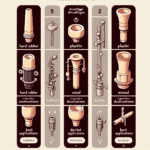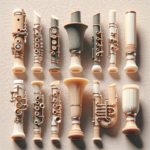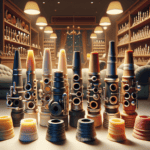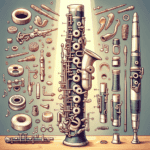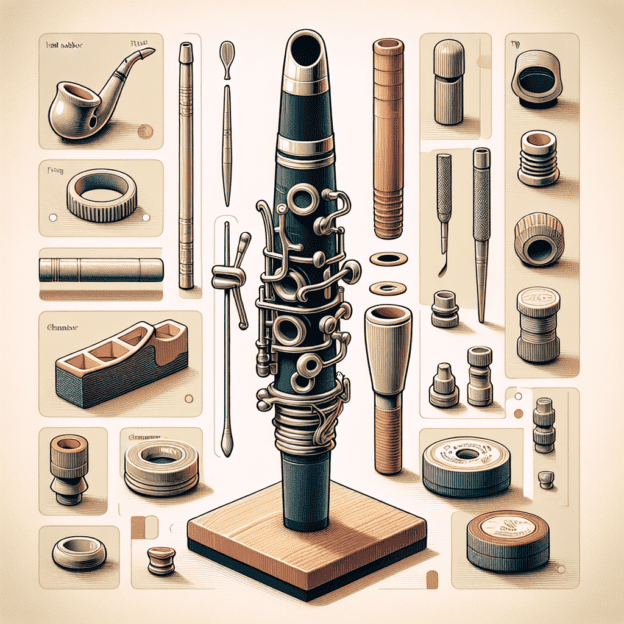The clarinet has been a beloved woodwind instrument for centuries, captivating musicians with its expressive range and versatility. At the heart of this instrument lies the mouthpiece, a component that plays a pivotal role in shaping the clarinet's sound and performance. This article will explore fascinating facts about clarinet mouthpieces, including their types, materials, sound influences, and tips for selecting the perfect mouthpiece for your playing style.
The Anatomy of a Clarinet Mouthpiece
Though small in size, the clarinet mouthpiece is a complex part of the instrument. It consists of several key components, each contributing to the overall sound and playability:
- The Tip: This part contacts the reed, with its shape and profile significantly impacting tone and playability.
- The Facing: The length and angle from the tip to where it meets the reed, influencing the pressure needed for sound production.
- The Chamber: The interior hollow area that shapes the sound. Its size and design contribute to the overall tone.
- The Table: A flat surface at the mouthpiece base that provides a seating area for the reed, ensuring proper alignment during play.
Materials Used in Clarinet Mouthpieces
Clarinet mouthpieces come in various materials, each offering unique characteristics to the instrument's sound and feel:
| Material | Characteristics | Suitable for |
|---|---|---|
| Hard Rubber | Warm sound, versatile | Various music styles |
| Plastic | Affordable, durable | Beginners, student players |
| Wood | Warm, rich sound | Orchestral settings |
| Metal | Bright, edgy sound | Jazz, contemporary music |
1. Hard Rubber
Hard rubber mouthpieces are a favorite among many clarinetists. They offer a warm sound and versatility, striking a balance between rich tone and brightness. This makes them suitable for a wide range of music styles.
2. Plastic
Plastic mouthpieces are budget-friendly and commonly used by beginners. While they might not match the sound depth of rubber mouthpieces, their durability and easy maintenance make them an excellent choice for students.
3. Wood
Wood mouthpieces, especially those crafted from granadilla or other hardwoods, are prized for their distinct tonal qualities. They produce a warm, rich sound that's particularly well-suited for orchestral settings. However, wood mouthpieces need proper care to avoid cracking or damage.
4. Metal
While less common, metal mouthpieces offer a bright, sharp sound. Some advanced players value the projection and clarity these mouthpieces provide, making them a good fit for certain jazz and contemporary music styles.
The Impact of Facing Length on Performance
The facing length of a mouthpiece can significantly affect a player's experience and sound production:
1. Short Facing
A shorter facing enables faster articulation but may require a more precise embouchure for a full tone. Jazz clarinetists often prefer this type for its quick response and flexibility.
2. Long Facing
Longer facings can produce a richer sound with more depth, but they typically require more air support. Classical players often favor this type for its warmth and fullness of tone.
Choosing the Right Mouthpiece
Picking the perfect mouthpiece can improve your playing comfort and sound quality. Consider these tips when making your choice:
1. Experiment with Different Materials
Try mouthpieces made from various materials to find what works best for your style. Each material offers unique tonal qualities and playing experiences.
2. Consider Facing Length
As you test mouthpieces, pay attention to the facing length. Think about your playing style and how well you adapt to different lengths, noting the impact on your comfort and sound.
3. Seek Recommendations
Talking to experienced players or instructors can provide valuable insights into which mouthpieces might suit your current skill level and preferred musical style.
4. Ensure Proper Fit
Always check that the mouthpiece fits securely on your clarinet. This ensures the best sound production and reduces the risk of air leaks.
Maintenance Tips for Your Mouthpiece
Proper maintenance is key to ensuring your mouthpiece performs well over time:
1. Clean Regularly
After each use, rinse your mouthpiece with warm water to remove saliva buildup. Avoid using soaps or abrasive materials that could harm the surface.
2. Check for Wear and Tear
Regularly inspect your mouthpiece for signs of wear, such as cracks or chips. Addressing these issues quickly can prevent more serious problems in the future.
3. Protect Your Mouthpiece
When you're not using it, store your mouthpiece in a protective case or pouch to prevent damage and maintain cleanliness.
Understanding the features, materials, and sound impact of clarinet mouthpieces is crucial for developing your unique style as a clarinetist. With the right mouthpiece and proper care, players at all levels can significantly enhance their clarinet experience.

